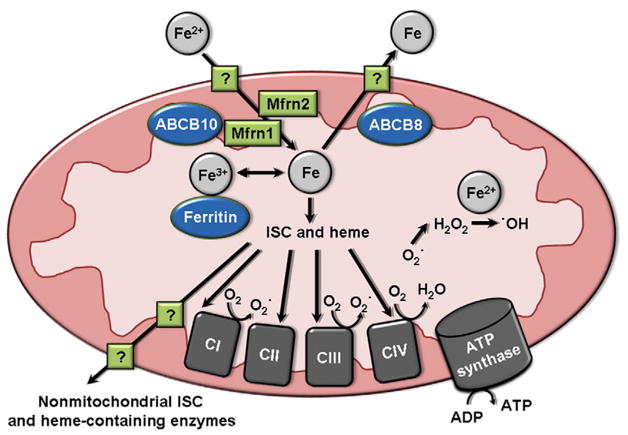Fig. 2.

Iron signaling in the mitochondria. The mechanism of iron import into the outer mitochondrial membrane is not fully known, but iron is imported into the inner mitochondrial membrane by Mfrn1 (assisted by ABCB10) and Mfrn2. The mechanism of iron export from the mitochondria is also not known, but is facilitated by the inner mitochondrial membrane protein ABCB8. In the mitochondria, iron remains as a labile iron pool, is bound by ferritin and stored, or is incorporated into ISC- and heme-containing enzymes of mitochondrial complexes of the electron transport chain. ISC and heme are also exported from the mitochondria by an unknown mechanism, then incorporated into non-mitochondrial ISC- and heme-containing enzymes. Mitochondrial complexes I and III produce superoxide ROS by electron leakage to O2. This superoxide is protonated to form H2O2, which can then react with free iron to form hydroxyl radical ROS. CI–CIV: complexes I through IV. ISC: iron/sulfur cluster.
